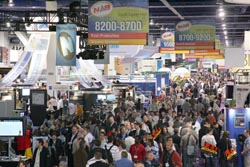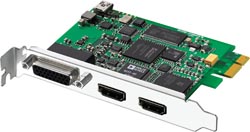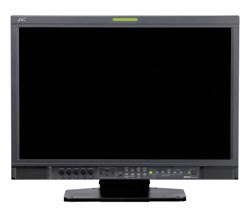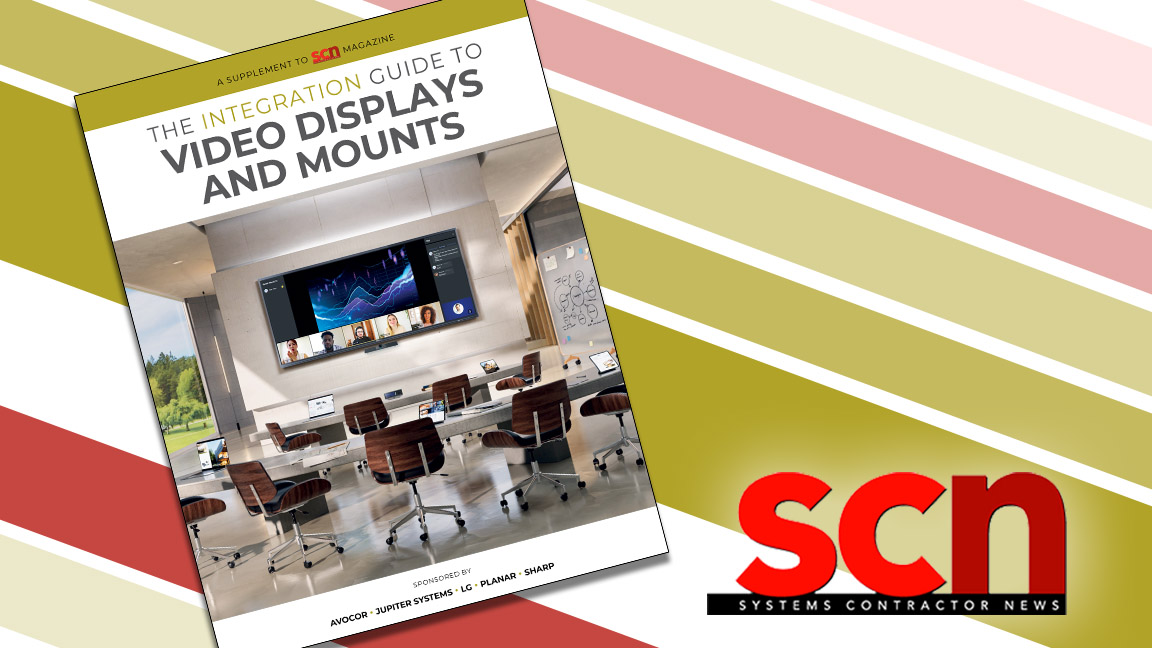Changing Channels

The "new" NAB not only offers a glimpse of big-ticket HDTV-related products and various mobile distribution technologies, but also new product and application news for those of us whose job involves knowing the sometimes obscure parts of the product universe that help keep a system glued together.It's happened every April for decades, and it has seen the introduction of countless new technologies. In recent years it has grown to one of the country's largest trade shows, with attendance exceeding 100,000. Some products that were once staples, such as 16mm cameras and film processors for news coverage, and more recent, but now obsolete technologies such as open-reel tape machines, are long since gone from the massive exhibit spaces at the Las Vegas Convention Center. One thing that hasn't changed is the event's name, that annual convention of the National Association of Broadcasters, known by its acronym, NAB.
Issues pertaining to broadcasters are still high at the top of the list. However, as the technology of electronic audio and video production has found distribution via channels and technologies that not only didn't exist, but in some cases weren't even imagined 25 years ago, the NAB show has seen representatives of broadcasters greatly outnumbered by attendees whose closest connection to anything that transmits RF is a cell phone or perhaps a two-way radio on a production shoot. While it's still NAB, the people in charge clearly see where their audience has gone. This year, as for the past five, the show's subtitle is "The World's Largest Electronic Media Show," and that it certainly is. You'll find more audio gear at AES, more displays at InfoComm or SID, more home automation products at CEDIA EXPO, and so forth. Yet, for all the changes to the exhibitor roster and the jobs held by attendees, there is no other place where you can find so many parts of the full spectrum of equipment and technologies from basic sound and image capture through the balance of the creation, editing, content management process straight through to the various distribution channels.
For the most part, SCN readers fit right into the world of the new NAB, and along with the big-ticket HDTV-related products and discussions about various mobile distribution technologies that are best left to discussion elsewhere, NAB did not disappoint in new product and application news for those of us whose job involves knowing the sometimes obscure parts of the product universe that help keep a system glued together. They are not always in the big manufacturer booths, but in the right setting they can certainly make a big difference for you.
On The Show Floor
One such product that fits the needs of those of us involved in video display comes from Los Gatos, CA-based Pixel Instruments. Its LipTracker makes certain that video and audio are locked together through the use of a non-invasive tool that analyses incoming audio and video and compares selected sounds in the video with the mouth shapes in the video that create them.

- Blackmagic Design's Intensity Pro video card is the first to offer both HDMI capture and playback, along with compatibility with a wide range of analog component, S-, or composite video and analog stereo audio (the analog inputs coming through an included system locks on to a face it maintains lock even during typical camera movements such as pans, tilts and zooms, as well as tracking the normal range of head motion. Of course, there is a manual override that lets you select a single face to focus in on during crowd shots, and the analysis of upper and lower lip motion in relation to the audio is language independent.
- Yes, there is a down side in that the current units are SD only from an SDI (SMPTE 259M-C) digital source, although video to SDI converters can presumably remedy that. Depending on options such as an LCD monitor the cost runs in the $17,000 range, but as time move forward this is certainly something whose price can only go down as computing power continues to follow Moore's Law. It is, however, quite unique and very effective. Now if the folks behind it can only find a way to boil this down into a technology package that makes it a standard part of any HD or SD video system!
- While capturing or editing your video, regardless of application, there is a fair chance that a computer will be involved. For the most part, monitoring is done through whatever monitor is tethered to the computer system, but what if you want to take advantage of an HDMI digital connection to the monitor, while at the same time making it possible to ingest material from a new digital camcorder equipped with and HDMI output? In a world where DV and its 1394 connections prevail until you get up into the realm of SDI and HD-SDI, HDMI hasn't been accounted for, but thanks to a new product shown at NAB, that is about to change.
- On display for the first time at NAB, Blackmagic Design's Intensity Pro video card is the first to offer both HDMI capture and playback, along with compatibility with a wide range of analog component, S-, or composite video and analog stereo audio (the analog inputs coming through an included breakout cable). The PCI Express card is compatible with both Windows and Mac hardware and popular applications on both platforms such as Adobe Premiere Pro, Apple Final Cut Pro, Adobe After Effects, Adobe Photoshop, or any DirectShow or QuickTime based application. With the Intensity Pro you can instantly switch between 1080 or 720 high definition and/or NTSC/PAL inputs, and with an included real-time mixing software program you can do live production with two camera mixing when two of the cards are in use.
- Particularly with newer camcorders such as Panasonic's HDC-SD1 or Sony's HDR-HC3, the HDMI connection lets you import "off-chip" video without going through the DV format's compression in the camera. Not bad.
- The applications here are many, ranging from using an HDMI-equipped large screen display or projector with the computer in an instructional setting to letting a large audience view material as it is acquired and cut in a computer on monitors that lack 1394/DV or other more computer based inputs. The idea is a good one, and the price of $349 is very competitive. Even better, if you don't require the analog inputs the standard Intensity board is only $249.
Pixel Instruments' LipTracker makes certain that video and audio are locked together through the use of a non-invasive tool that analyses incoming audio and video and compares selected sounds in the video with the mouth shapes in the video that create them.Screen Test
A natural follow-on to these two video-based products is to take a momentary step back from looking at individual brands and make note of the appearance at NAB of an increased number of "professional grade" LCD video monitors with 1920 x 1080 resolution. While "1080p" monitors in LCD, and more recently in plasma-based technology are available sizes smaller than 40-inch have, to date generally meant using displays that may be capable of displaying a "full HD" image, but not at a native-to-native rate. To avoid the use of scaling, that no matter how good, might induce some artifacts, the ideal is always to have the input and display match. For standard video production, that points to 1920 x 1080 as the most desirable standard.
Viewing the display scene at NAB, literally the one thing that struck home was a greatly increased range of full HD monitors in sizes that lend themselves to edit stations, control room applications, mobile production units and monitoring racks. Of course, all of this with the type of video quality on expects in a critical monitoring situation. An example of that is Sony's BVM-L230, a 22.5-inch widescreen monitor that is based around a 10-bit video drivers with the capability of 1,024 gray scale levels. Clearly, the intent here is to put together a package that once and for all puts to rest the notion that LCD monitors are equal to the standards set by CRT monitors in terms of color accuracy and reproduction as well as picture response. A note, however, that this level of quality does not come cheap. When it is available this fall, the BVM-L230 will carry a suggested list price around $25,000.
Of course, Sony is not alone in delivering LCD monitors for high-end applications. Wohler's HD Mon170 is a 17-inch-wide full-HD set, and JVC will also offer a 24-inch-wide high-quality monitor, though its DT-V24L1D will post a more modest price of $4,695.
A daily selection of the top stories for AV integrators, resellers and consultants. Sign up below.
Despite the "it would be nice" requirement for full native resolution at all monitor sizes, it does become difficult, if not impossible in truly small (under 10-inch-wide) monitor configurations. Into the small-size world where viewfinder and field monitoring is a more typical application colorimitry and resolution remain important, but other features are important. Panasonic's BT-LH80W fits into that mold nicely, offering features that facilitate precision focus such as "Focus-In-Red" and a "Pixel-to-Pixel Matching" mode that lets you see an input signal pixel-by-pixel without resizing, giving you the equivalent of a 19-inch-wide monitor for the best possible camera focus adjustment.

NAB featured a greatly increased range of full HD monitors in sizes that lend themselves to edit stations, control room applications, mobile production units and monitoring racks, including JVC's DT-V24L1D.
Sound Check
If audio, rather than video capture is your thing, and you need a simple, but high quality way to capture audio for editing or distribution, U.K. based HHB Communications was showing its DRM85 FlashMic at NAB, and it is another of those interesting digital firsts. Combining high quality cardiod or omni-directional microphone capsules, a digital converter and 1Gb of flash memory in a battery powered (two AA cells) unit, you have the ability to press a button and record, with no further equipment needed. This isn't a toy, as the digital encoding may be in either LPCM up to 48kHz or MPEG2 up to 48kHz/192 kbps format. Depending on the format and sample/bit rate this gives you up more than 18 hours of record time with a capacity of 999 tracks.
A USB port and supplied software makes it easy to download the files when the recording is done, and the headphone jack's buffered output can double as an analog line out for external recording or amplification. This becomes an interesting choice for field recording, or to serve as a conventional microphone that feeds the amps and speakers but then gives you an instant, high quality digital recording of the event. This could almost be this year's winner of the "Why didn't I think of that!" award.
This was, to some extent, one of those years where the NAB had no new product announcements of an earth shattering, paradigm-busting, disruptive nature. Some of the products and concepts are merely previews of what will be available further down the road, while other announcements were refinements to technologies introduced in years past. Regardless, it did fill in some of the blanks for everyone in the electronic media community. Along with those few items featured here, we will more importantly update you on the impact of the "behind the scenes" and "not quite ready for prime time" side of NAB as the year moves forward.
Blackmagic Design...www.blackmagic-design.com
HHB...www.hhb.co.uk
JVC Professional...www.pro.jvc.com
Panasonic...www.panasonic.com
Pixel Instruments...www.pixelinstruments.com
Sony Professional...www.sony.com/professional
Wohler Technologies...www.wohler.com
